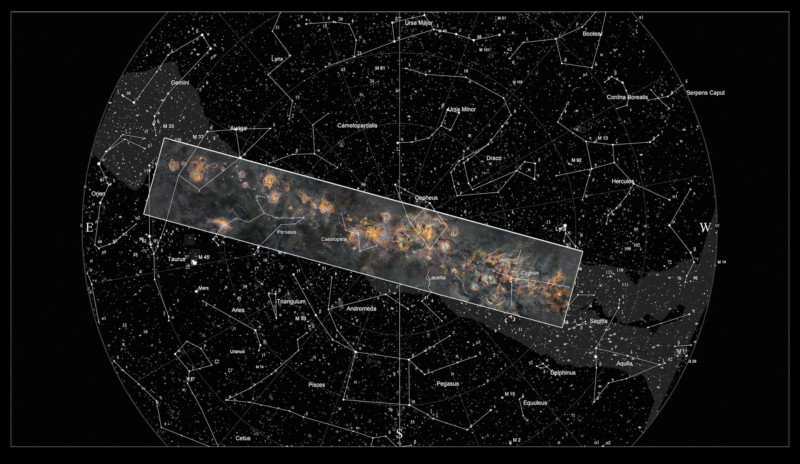
In the final, climactic scene of Japanese novelist Yasunari Kawabata’s Snow Country, the Milky Way engulfs the protagonist — an aesthete who keeps himself detached from the world, a universal perspective overtaking an insignificant individual.
We now know the Milky Way itself to be a minuscule part of the whole, just one of 100 to 200 billion galaxies. But until Edwin Hubble’s observations in 1924, it was thought to contain all the stars in existence.

The Milky Way-as-universe is a powerful image, and certainly more comprehensible than the universe as astronomers currently understand it. Its vastness can’t be compressed into a symbolic form like the via lactea, “Milky Way,” or as the Greeks called it, galaktikos kýklos, “milky circle.” Andy Briggs summarizes just a few of the ancient myths and legends:
To the ancient Armenians, it was straw strewn across the sky by the god Vahagn. In eastern Asia, it was the Silvery River of Heaven. The Finns and Estonians saw it as the Pathway of the Birds.… Both the Greeks and the Romans saw the starry band as a river of milk. The Greek myth said it was milk from the breast of the goddess Hera, divine wife of Zeus. The Romans saw the river of light as milk from their goddess Ops.
A barred spiral galaxy spinning around a “galactic bulge” with an empty center, a “monstrous black hole,” notes Space.com, “billions of times as massive as the sun”… the Milky Way remains an awesome symbol for a universe too vast for us to hold in our minds.

Witness, for example, the just-released image further up, a 1.7 gigapixel panoramic photo of the Milky Way, from Taurus to Cygnus, 100,000 pixels wide, pieced together from 234 panels by Finnish astrophotographer J‑P Metsavainio, who began the project all the way back in 2009. “I can hear music in this composition,” he writes at his site, “from high sparks and bubbles at left to deep and massive sounds at right.”
Over 12 years, and around 1250 hours of exposure, Michael Zhang writes at Petapixel, Metsavainio “focused on different areas and objects in the Milky Way, shooting stitched mosaics of them as individual artworks.” As he began to knit the galactic clouds of stars and gasses together into a Photoshop panorama, he discovered a “complex image set which is partly overlapping with lots of unimaged areas between and around frames.” Over the years, he filled in the gaps, shooting the “missing data.” He describes his equipment and process in detail, for those fluent in the technical jargon. The rest of us can stare in silent wonder at more of Metsavainio’s work on his website (where you can also purchase prints) and Facebook, and let ourselves be overtaken by awe.
via Petapixel and Kottke
Related Content:
How Scientists Colorize Those Beautiful Space Photos Taken By the Hubble Space Telescope
Josh Jones is a writer and musician based in Durham, NC. Follow him at @jdmagness


Leave a Reply